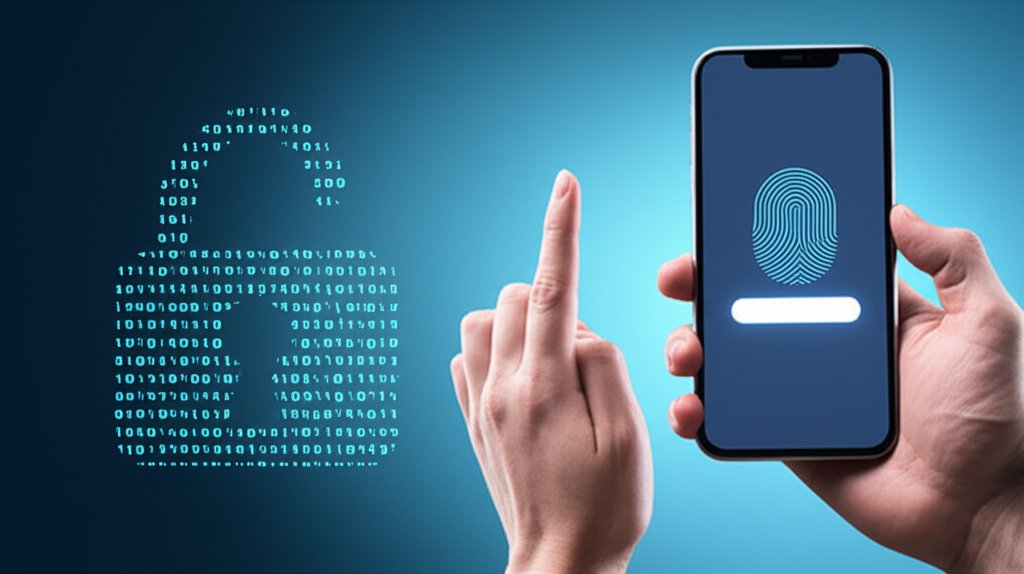As a security professional, I’ve seen firsthand the struggles you face with digital security. We’re constantly told to create strong, unique passwords, remember them, and change them often. But let’s be honest, it’s a monumental task that often leaves us feeling frustrated and vulnerable. The truth is, relying solely on passwords just isn’t cutting it anymore. The statistics are stark: in 2023, nearly 80% of data breaches involved compromised credentials, highlighting the critical weakness of our current approach to digital identity.
That’s why I’m excited to talk about passwordless authentication. It’s not just a buzzword; it’s a transformative approach to identity security that promises both dramatically stronger defenses against cyber threats and a much smoother, more convenient user experience. For everyday internet users and small businesses alike, this could be the key to finally taking control of your online safety without the constant hassle.
Ready to ditch the password headache and embrace a more secure future?
What You’ll Learn: Stepping into a Password-Free World
In this comprehensive guide, we’re going to demystify passwordless authentication. You’ll discover:
- Why our traditional reliance on passwords has become a ticking time bomb for online security and leads to frustrating user experiences.
- What passwordless authentication truly is, how it works at a fundamental level, and how it fundamentally differs from what you’re used to.
- A deep dive into the specific types of passwordless options available today, from biometrics like your fingerprint to cutting-edge Passkeys.
- The game-changing benefits of going passwordless: dramatically enhanced security, frictionless access, and reduced IT burdens for small businesses.
- How passwordless authentication relates to Multi-Factor Authentication (MFA) – spoiler alert: they’re often friends, not foes!
- Practical steps you can take right now to start your journey towards a more secure, password-free future.
Prerequisites: Your Ready-to-Learn Checklist
You don’t need to be a tech wizard to understand passwordless authentication. All you really need for this journey is:
- An internet-connected device (smartphone, computer, tablet).
- A desire to boost your online security and simplify your digital life.
- An open mind to embrace new, more secure ways of logging in.
Your Journey to Passwordless: Practical Steps to Get Started
Ready to experience a smoother, safer way to log in? Here’s how you can start embracing passwordless authentication today:
Step 1: Understand The Password Problem: Why Traditional Logins Aren’t Enough Anymore
Before we dive into solutions, let’s acknowledge the profound problem. Passwords, by their very nature, are a weak link in our digital identity security. We create them, forget them, reuse them, and sometimes, despite our best efforts, they get stolen. This leaves us vulnerable to a slew of common cyber threats:
- Phishing Attacks: These deceptive emails or texts cunningly trick you into revealing your password on fake login pages. Passwords are their primary target.
- Brute-Force Attacks: Automated tools relentlessly try endless combinations until they guess your password. Weak passwords are particularly susceptible.
- Credential Stuffing: Cybercriminals take passwords stolen from one site (often from large data breaches) and automatically try them on hundreds of other sites, banking on password reuse. This is incredibly effective due to common user habits.
Beyond the severe security risks, there’s the sheer user frustration. Remember that moment when you just can’t recall your password for a crucial service, or the constant resets that eat up valuable time? For businesses, password-related support tickets are a significant drain on IT resources. It’s time for a fundamentally better way.
Step 2: Define and Understand Passwordless Authentication
So, what exactly is passwordless authentication? Simply put, it’s any method of verifying your identity that doesn’t rely on a memorized, reusable string of characters. Instead, it leverages something unique to you: something you have (like your smartphone, a security key, or your email inbox) or something you are (like your fingerprint or face). The fundamental difference is moving away from a shared secret (the password) to a system where your identity is verified through possession or inherent personal attributes, making it much harder for attackers to compromise.
Step 3: Grasp the Simplified Mechanics: How Does It Work?
At its core, passwordless authentication replaces the vulnerable shared secret (your password) with a pair of cryptographically linked keys – a private key and a public key. When you log in:
- You initiate a login – perhaps by entering your username or email, or simply clicking a “Sign in” button.
- The service sends a unique “challenge” (a random piece of data) to your registered device (your phone, security key, or computer).
- Your device then uses its unique private key (which is securely stored and often protected by your biometric data or a PIN) to digitally “sign” that challenge. This private key never leaves your device.
- The service verifies this digital signature using your corresponding public key (which it already holds). If the signature is valid and matches, proving possession of the private key, you’re authenticated and logged in!
You don’t see the complex cryptography happening in the background, but this sophisticated handshake is what makes these methods so secure and resistant to common cyber threats like phishing.
Step 4: Explore and Adopt Popular Passwordless Methods
Here are the common ways you can start experiencing passwordless logins, each offering unique benefits:
-
Biometrics (Fingerprint, Face ID, Iris Scan):
- How it works: Your unique physical traits are used to unlock access to your device. Once unlocked, your device then securely authenticates you to an app or service. Critically, your raw biometric data rarely, if ever, leaves your device, making it highly secure and private.
- Benefits: Incredibly fast and convenient, highly resistant to shoulder surfing, and your biometric data itself is never transmitted.
- How to adopt: Enable Face ID or fingerprint on your smartphone for banking apps, app store purchases, and many websites that support it. Most modern devices offer this as a built-in feature, making it an easy first step into passwordless authentication.
-
Magic Links (Email/SMS):
- How it works: Instead of a password, you enter your email or phone number. The service sends you a unique, time-sensitive, one-time link (a “magic link”) via email or SMS. Clicking this link logs you in instantly.
- Benefits: Very user-friendly, no password to remember, and resistant to brute-force attacks.
- How to adopt: Look for services that offer “Login with email” or “Send me a magic link.” Many newer services and some existing ones are adopting this for convenience. Ensure your email account is well-secured with strong MFA!
-
One-Time Passcodes (OTP) / Authenticator Apps:
- How it works: You receive a time-sensitive, single-use code via SMS (OTP) or generate it through a dedicated authenticator app (like Google Authenticator or Authy). You then input this code into the login screen. While often used as a second factor with passwords, many services now allow them as a primary passwordless method.
- Benefits: Codes are single-use, preventing reuse if intercepted. Authenticator apps are generally more secure than SMS codes, as they are not vulnerable to SIM-swapping attacks.
- How to adopt: Enable 2FA/MFA on your accounts and choose an authenticator app over SMS whenever possible. Services like ProtonMail and many others support this as a primary login option.
-
Passkeys (FIDO/WebAuthn):
- How it works: This is widely considered the golden standard for the future of passwordless digital identity. A Passkey is a digital credential stored securely on your device (phone, computer, hardware key) that allows you to sign into websites and apps using biometrics or a PIN, without ever entering a traditional password. It’s built on FIDO (Fast Identity Online) and WebAuthn standards, making it cryptographically strong and specifically designed to be phishing-resistant. Passkeys are often synchronized across your devices via your operating system’s password manager (e.g., iCloud Keychain, Google Password Manager), offering seamless access and recovery.
- Benefits: Extremely high security (phishing-resistant), unparalleled convenience, and easy recovery across devices. This is the future of online login.
- How to adopt: As major platforms like Google, Apple, Microsoft, PayPal, and more roll out Passkey support, you’ll see options to “Create a Passkey” or “Sign in with your device.” Just follow the prompts! Prioritize enabling Passkeys on your most critical accounts.
-
Hardware Security Keys (USB Devices):
- How it works: These are small physical devices (like a USB drive or NFC fob) that you plug into your computer or tap to your phone to authenticate. They serve as an unphishable second or primary factor.
- Benefits: Offer extremely strong protection against phishing and account takeover due to their physical nature. Ideal for high-value accounts.
- How to adopt: Purchase a FIDO2-certified security key (e.g., YubiKey, Google Titan Key) and register it with compatible services (Google, Facebook, Twitter, GitHub, etc.) that support the FIDO standard.
Common Issues & Solutions: Navigating the Passwordless Landscape
It’s natural to have questions and concerns when adopting new security measures. Let’s address a few common ones:
What if I lose my device that stores my Passkeys or biometrics?
This is a common and valid concern! For Passkeys, many systems allow them to be synchronized across your devices securely (e.g., via iCloud Keychain, Google Password Manager, or Microsoft Authenticator). If you lose one device, your Passkeys are still available on your other trusted devices. For other passwordless methods, services almost always provide robust recovery options, often involving a backup email, phone number, or a set of one-time recovery codes. Always ensure your recovery options are up-to-date and stored securely, perhaps in a physical safe or a dedicated password manager.
Is my biometric data really safe?
Yes, overwhelmingly so. Your raw biometric data (fingerprint scan, face map) is almost never stored remotely or shared with websites. Instead, it’s typically processed and stored securely on your device itself, often within a dedicated, encrypted hardware module (like Apple’s Secure Enclave or Android’s StrongBox). When you use biometrics, your device simply confirms “yes, this is the authorized user” to the app or service, without ever sending your actual biometric data anywhere. This design ensures your unique physical attributes remain private and protected.
What if a service I use doesn’t support passwordless yet?
The transition to a fully passwordless future is ongoing. For now, you’ll still encounter services that rely solely on passwords. My advice? Prioritize services that offer passwordless options, especially for critical accounts like email, banking, and social media. For the rest, continue to use strong, unique passwords generated and stored by a reputable password manager, and enable traditional Multi-Factor Authentication (MFA) whenever possible. It’s about gradually reducing your reliance on passwords, not eliminating them overnight. Every step you take towards passwordless authentication makes your overall online security posture stronger.
Advanced Tips: Maximizing Your Passwordless Security
Passwordless vs. MFA: A Powerful Synergy
Often, people confuse passwordless with Multi-Factor Authentication (MFA). Here’s the clarification:
- MFA adds additional verification factors (something you have, something you are) on top of your password. So, password + OTP = MFA.
- Passwordless authentication
replaces the password entirely with one or more of these factors.
The beauty is that many passwordless methods inherently provide MFA-level security because they rely on at least two factors. For instance, a Passkey typically involves your device (something you have) and your biometric or PIN (something you are/know) to unlock it. So, a strong passwordless implementation often means you’re already using very robust, phishing-resistant MFA, giving you superior online security.
Pro Tip: Passkeys Are The Future – Focus Here!
While all passwordless methods offer benefits, Passkeys (built on FIDO/WebAuthn standards) represent the most significant leap forward. They are cryptographically secure, inherently phishing-resistant, and designed for seamless cross-device synchronization and recovery. As an individual, start adopting Passkeys wherever you see the option. For small businesses, consider prioritizing platforms and services that support FIDO2 standards, as this will lay a strong foundation for future-proofing your identity management and bolstering your overall security posture.
Reducing IT Burden for Small Businesses
For small businesses, embracing passwordless authentication isn’t just about security; it’s about significant operational efficiency. Consider how much time your team (or you!) currently spends on password resets, account lockouts, and managing complex password policies. Implementing passwordless solutions can drastically reduce these help desk tickets and associated costs, freeing up valuable IT time and resources to focus on more strategic initiatives. A study by IBM found that passwordless authentication can cut login times by up to 90% and reduce support calls by 50%. Consider phasing in passwordless options, perhaps starting with new employees or less critical systems, before rolling it out company-wide. It’s a strategic investment in both enhanced security and improved productivity.
Next Steps: The Passwordless Horizon
The shift to passwordless authentication is more than a trend; it’s the inevitable evolution of identity management. Major tech companies are pushing it hard, and we’re seeing growing adoption across various industries. Imagine a world where logging in is as simple and secure as unlocking your phone, with no passwords to remember, type, or forget. That’s the promise of passwordless, offering both superior security and unparalleled convenience.
We’re even looking at advancements like continuous authentication, where your identity is passively verified throughout your session based on behavioral biometrics (like your typing rhythm, mouse movements, or how you hold your device). This offers seamless, ongoing security without interrupting your workflow, creating an even more frictionless and secure digital experience.
By understanding and adopting passwordless methods today, you’re not just improving your current security; you’re future-proofing your digital identity against tomorrow’s cyber threats.
Conclusion: Your Gateway to a Safer, Simpler Online Life
The era of frustrating, insecure passwords is drawing to a close. Passwordless authentication offers a powerful, user-friendly alternative that significantly boosts your online security while simplifying your digital interactions. Whether you’re an individual looking for peace of mind or a small business aiming for greater efficiency and resilience against cyber threats, embracing this change is a move you won’t regret.
Key Takeaways:
- Passwords are a Weak Link: They are the primary target for most cyberattacks and cause significant user frustration.
- Passwordless is Secure and Convenient: It replaces vulnerable passwords with stronger, more user-friendly methods like biometrics, magic links, and Passkeys.
- Passkeys are the Gold Standard: Built on FIDO/WebAuthn, they offer phishing-resistant security and seamless cross-device usability.
- Benefits Extend Beyond Security: Reduced IT burdens and improved user experience are significant advantages for businesses.
- It’s a Gradual Transition: Start adopting passwordless methods on your most critical accounts today, while maintaining strong practices for others.
Don’t wait for another data breach or the constant struggle of forgotten passwords to force your hand. Take proactive control of your digital identity. Start exploring passwordless options on your favorite services today, one account at a time. Empower yourself, secure your digital life, and experience the future of logging in.
Try it yourself and share your results! Follow for more insights into practical digital security.









